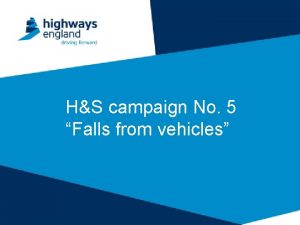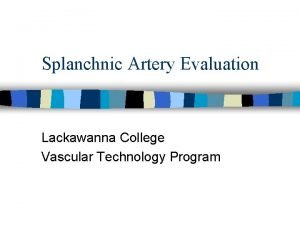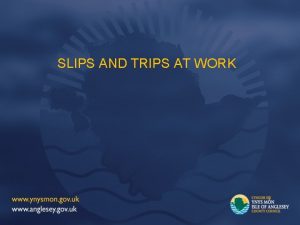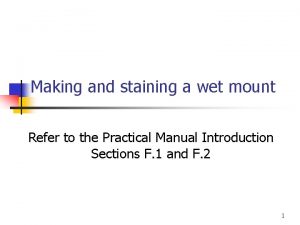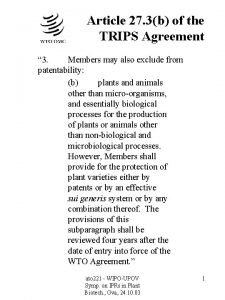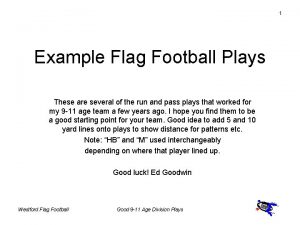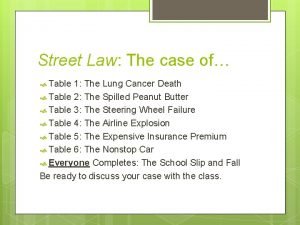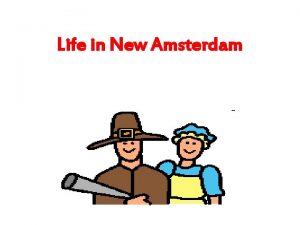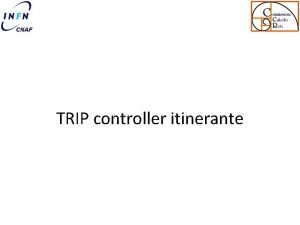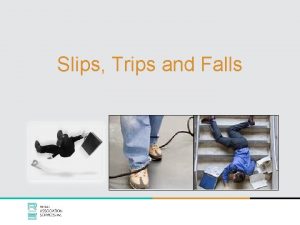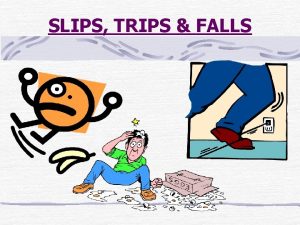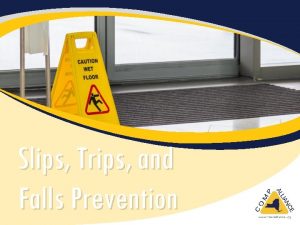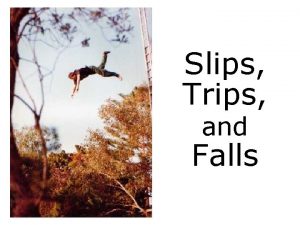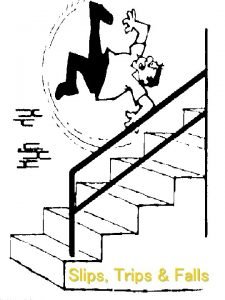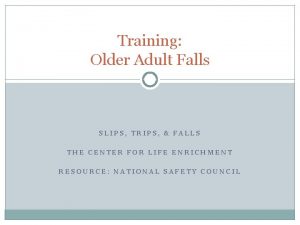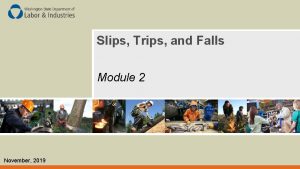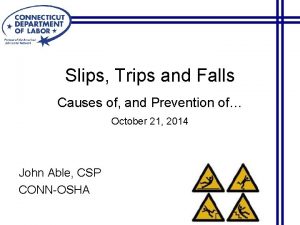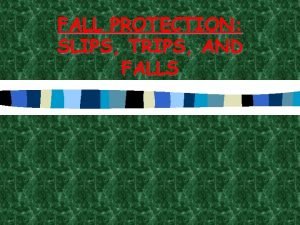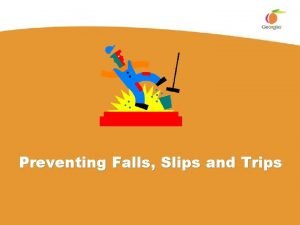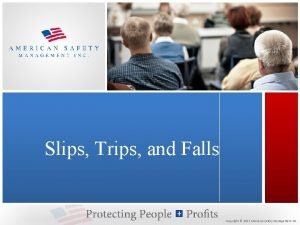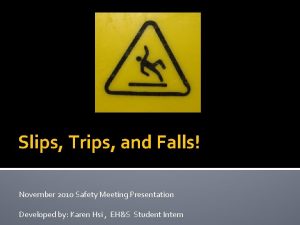Module 4 Controlling Slips Trips and Falls 2006





















- Slides: 21

Module 4 Controlling Slips, Trips and Falls © 2006 4 -1

Objectives After completing this module, you will be able to: n Identify the hierarchy of controls as it relates to slips, trips and falls. n Identify the various floor types and their corresponding characteristics. n Identify three actions you can take to make your existing floors less slippery. © 2006 4 -2

Objectives—continued n Implement controls that make employees safe when they are working at heights. n Determine how to select and recommend an appropriate work shoe. n Recognize the role that fraud plays in floor safety. © 2006 4 -3

Slip, Trip and Fall Prevention Recognize Evaluate Control © 2006 4 -4

Engineering Controls that are engineered into the job—most important type of control © 2006 4 -5

Types of Engineering Controls n Redesign of equipment n Substitution of a material, equipment or process n Change of process to minimize slips, trips and falls n Use of barriers to isolate a hazard n Use of barriers to isolate a person © 2006 4 -6

Administrative Controls that change the way people do their jobs—only effective when people do what they are supposed to do © 2006 4 -7

Types of Administrative Controls n Education and training n Signage n Adjusting work schedules or rotating assignments to reduce exposure n Maintenance n Good housekeeping n Contracting specialized services © 2006 4 -8

Personal Protective Equipment Controls that protect people from the hazard rather than eliminate the hazard © 2006 4 -9

Types of PPE n n n n © 2006 Slip-resistant shoes Fall arrest equipment Hard hats Goggles Nets Roll bars Safety platforms 4 -10

Floor Selection Criteria n n n © 2006 Slip resistance Ease of cleaning Ease of maintenance Durability Absorption Frost Resistance 4 -11

Making Floors Slip Resistant t n a t s i s. e s r t n p e i l s m t y a l e p r p t A oor fl Use f loor mat s. Apply floor skid strips to steps and stair nosings. © 2006 4 -12

Key Controls for Ladder Safety © 2006 s Us n o i t co e o c e p nd n s n i. ly i e r t s e i on lad u d d h a eac l an de e f r i o u re r t d a rs i q o f e R he pp n be job rop goo. ria d te Ma n pe ke p o rfo ro s se. e rm pe e u y r o an r la l e p dd ce dd m e la req er in per uir use a em a Tr pro en t. 4 -13

Fall Arrest Systems Four Components The full body harness The anchorage The connectors The rescue plan © 2006 4 -14

Maximum Arresting Force The maximum arresting force allowed when a person is using a full body harness is 1, 800 pounds. © 2006 4 -15

Maximum Fall Distance Maximum free fall distance = 6 feet + Deceleration distance = 3. 5 feet + Safety factor = 2 feet 11. 5 Feet © 2006 4 -16

The Right Shoe © 2006 4 -17

What’s in a Shoe? Tread everywhere Pattern in tread Deep grooves Nitrile rubber Tread not worn Flat heel © 2006 Grooves widely-spaced 4 -18

Hard Fraud A person plans a faked injury for the sole purpose of making money. © 2006 4 -19

Soft Fraud A person slips, trips or falls, but exaggerates the injury to make money. Also called “opportunity fraud” © 2006 4 -20

Action Plan Action © 2006 Potential Barriers Overcoming the Barriers 4 -21
 Slips trips and falls presentation
Slips trips and falls presentation Hse slips trips and falls video
Hse slips trips and falls video Kitchen first aid
Kitchen first aid Median arcuate ligament
Median arcuate ligament Detention slips
Detention slips Work slips
Work slips How to add a stain to a wet mount slide
How to add a stain to a wet mount slide Freudian slips
Freudian slips Freudian slips
Freudian slips Freudian slips
Freudian slips Intrazonal and interzonal
Intrazonal and interzonal C device module module 1
C device module module 1 Visual symbols cone of experience
Visual symbols cone of experience School trips to chateau du molay
School trips to chateau du molay Article 27.3(b) of the trips agreement
Article 27.3(b) of the trips agreement Arrow c
Arrow c What is trips
What is trips Sixteen year old carrie is babysitting
Sixteen year old carrie is babysitting New amsterdam vacation
New amsterdam vacation External-external trips
External-external trips Nice trips todeals
Nice trips todeals Trips everywhere 2
Trips everywhere 2

